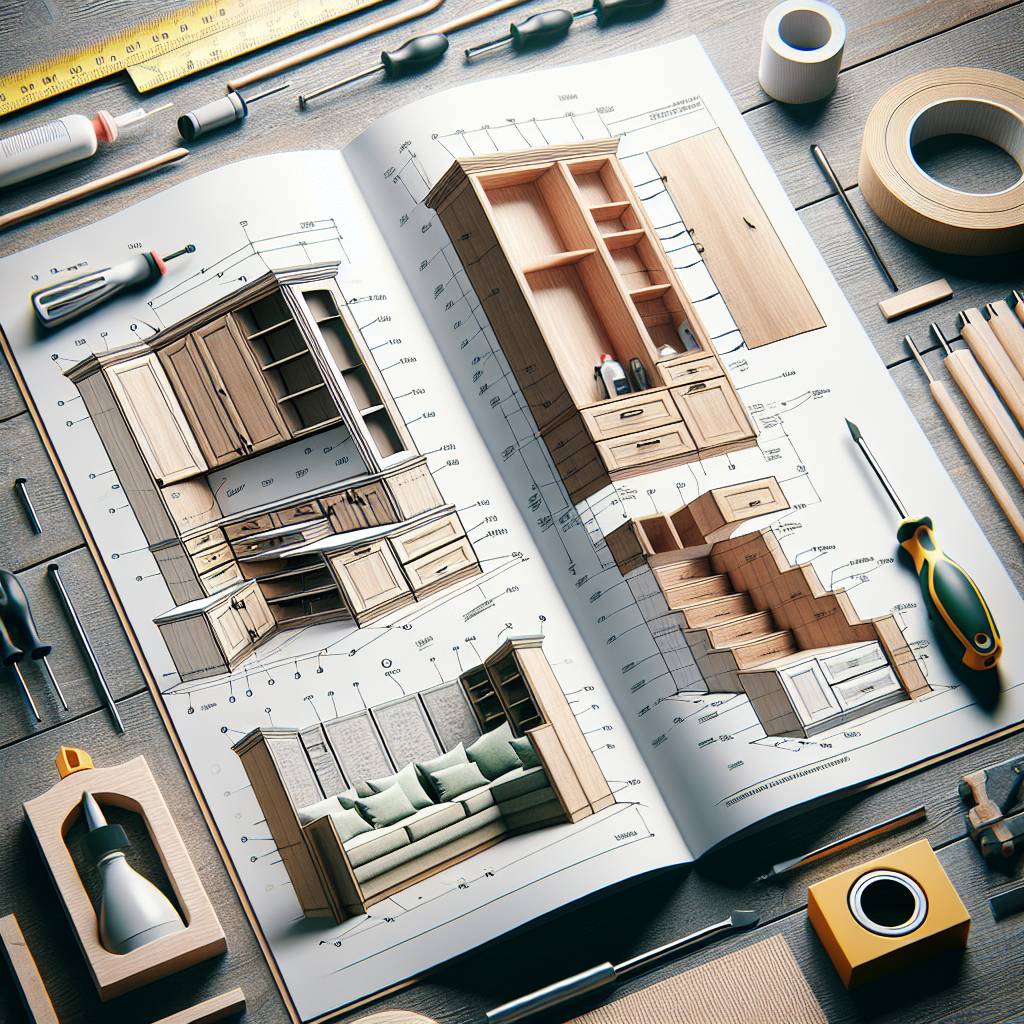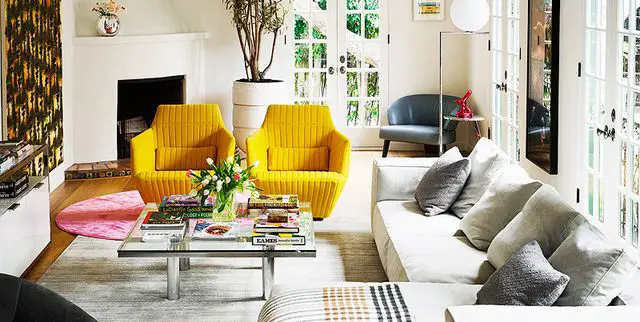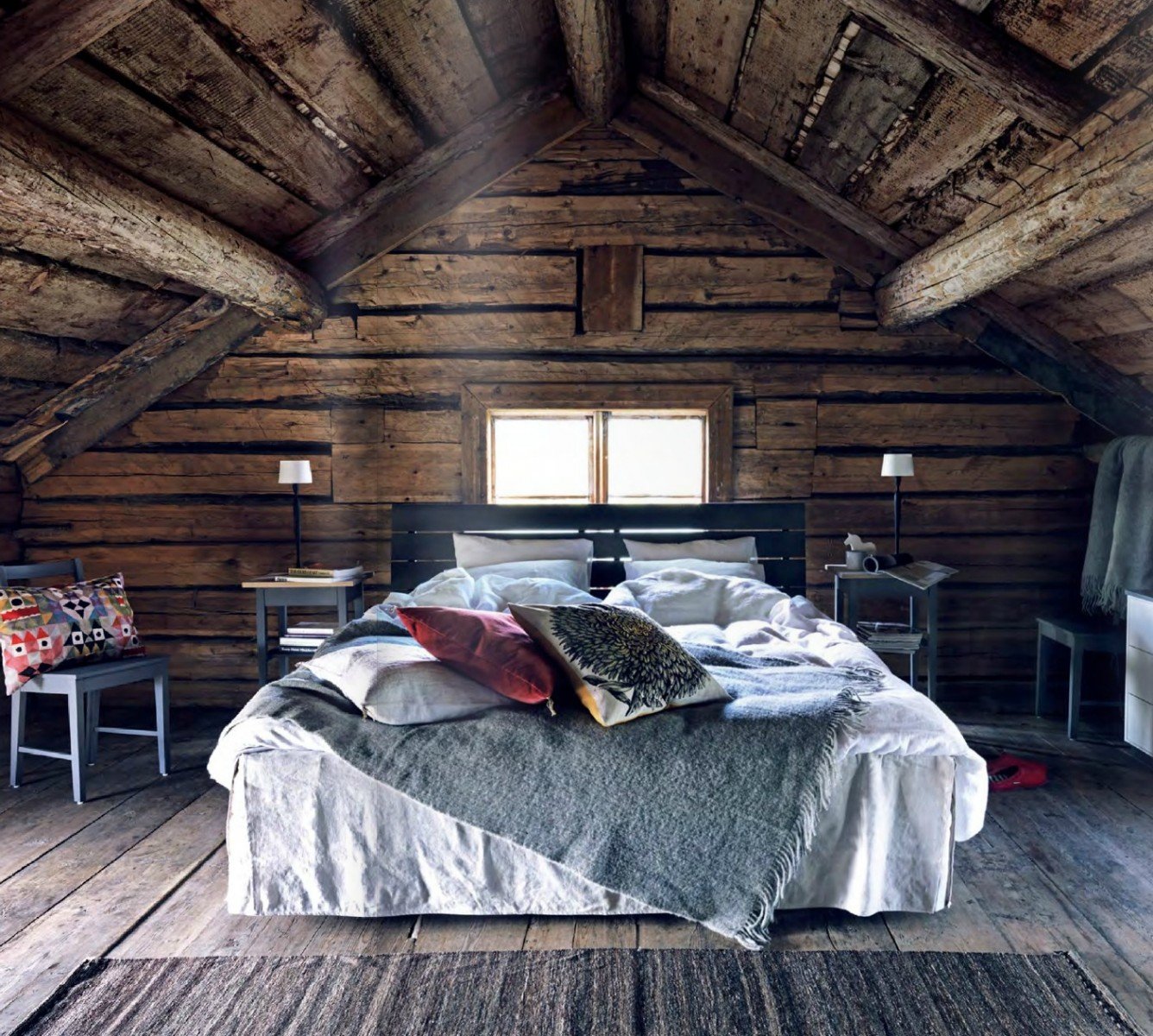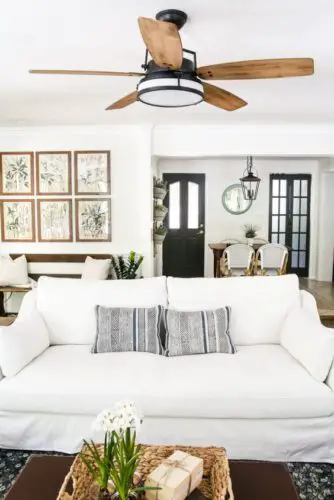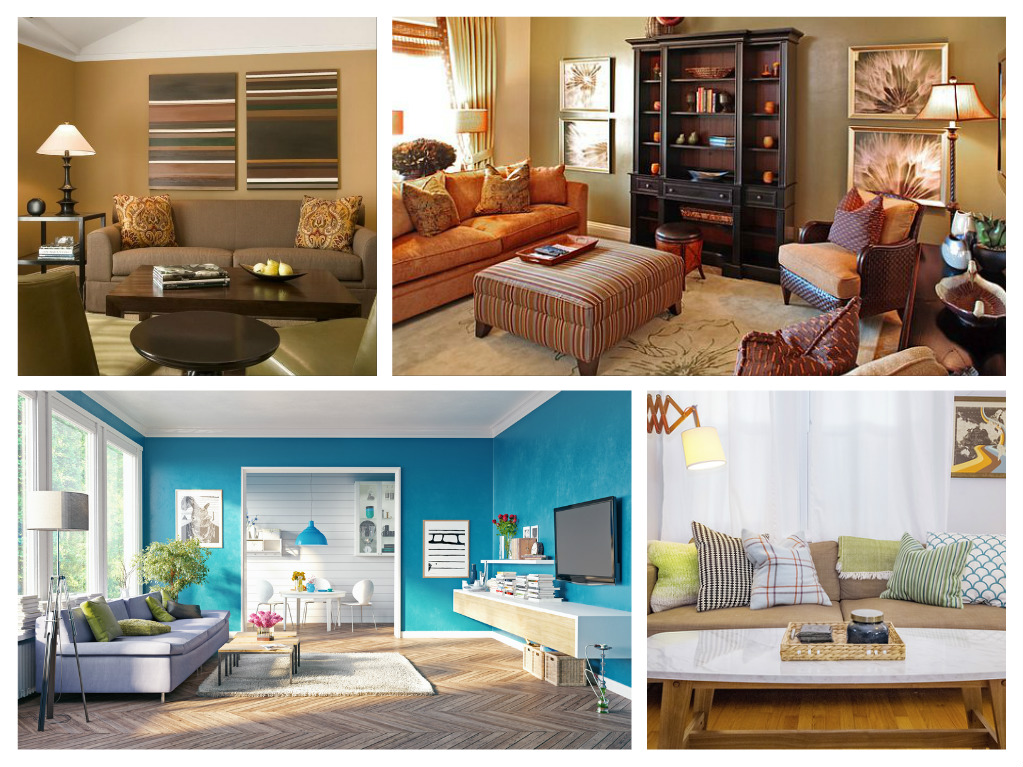Dive straight into the heart of personalized home elegance with custom built-in cabinets for living rooms; a seamless blend of style and organization tailored just for your space. These aren’t your average storage solutions – they’re a game-changer in maximizing room potential, offering unmatched benefits that pre-made options can’t hold a candle to. With every shelf and drawer designed specifically for your needs, you’ll see why “custom” means having both beauty and efficiency right where it counts: in the most lived-in part of your home.
Exploring the Versatility of Custom Built-Ins
Room Sizes
Custom built-in cabinets are incredibly versatile, fitting seamlessly into living rooms of all sizes. Whether it’s a cozy apartment or a spacious family home, these custom pieces can be tailored to maximize space utilization and complement the room’s dimensions. For smaller living rooms, built-ins can be designed to provide essential storage without overwhelming the limited area. In contrast, larger spaces allow for expansive built-ins that serve as focal points while offering substantial storage and display options.
In a small apartment with limited floor space, custom built-ins can efficiently utilize vertical wall space for storage and display purposes. For instance, floating shelves integrated with cabinets can create an illusion of openness while providing ample storage for books, decorative items, and electronic devices. On the other hand, in a large living room with high ceilings and generous floor area, custom built-in cabinets can span entire walls to create an impressive feature that provides extensive storage options along with showcasing cherished possessions.
Materials and Finishes
The versatility of custom built-in cabinets also extends to the wide array of materials and finishes available. From traditional wood finishes like oak or maple to sleek laminates or even glass elements – there are numerous choices to suit various interior styles and personal preferences. For example, in a modern living room characterized by clean lines and minimalist decor, glossy white lacquer finish on built-ins could enhance the contemporary ambiance.
Moreover, incorporating metal accents such as brass handles or trim details adds an extra touch of sophistication to custom built-ins while allowing them to harmonize with existing furniture pieces in eclectic interiors. The adaptability is not only restricted to aesthetics but also extends functionality; durable materials like engineered wood products ensure longevity in high-traffic areas while maintaining visual appeal.
Multi-Purpose Functionality
One remarkable aspect of custom-built ins is their ability to serve multiple functions within a living room setting. These versatile units aren’t just about storing items; they can integrate entertainment systems seamlessly or even function as partitions that define different areas within an open-plan layout. For instance, incorporating specialized compartments within built-in cabinets allows easy organization of media equipment like gaming consoles or sound systems without cluttering the living space.
Furthermore, when used as dividers between distinct zones such as dining and lounging areas within an open-concept layout, customized shelving units offer both practicality and aesthetic appeal simultaneously—creating delineation without compromising spatial flow.
Stock Cabinet Options for DIY Custom Built-Ins
Overview of Stock Cabinets
Utilizing stock cabinets can be a cost-effective and convenient option. Stock cabinets are pre-made, standard-sized cabinets that are readily available at home improvement stores. They come in various styles, finishes, and configurations, offering homeowners a wide range of choices to suit their specific needs. These stock options provide flexibility in design and functionality while being more affordable compared to custom-built solutions.
Stock cabinetry typically includes base cabinets, wall cabinets, tall cabinets, and specialty units such as corner or pantry cabinets. These versatile pieces can be combined and arranged to create unique built-in cabinet designs that cater perfectly to the layout of your living room. For instance, you can mix different types of stock cabinetry to craft an entertainment center with open shelving for display items alongside enclosed storage space for media equipment.
Tips on Choosing the Right Stock Cabinets
Selecting the ideal stock cabinets for your DIY custom built-ins requires careful consideration of several factors. First and foremost is accurately measuring the available space in your living room where the built-ins will be installed. This ensures that the chosen stock units fit seamlessly into the designated area without any gaps or overcrowding.
Another crucial aspect is assessing your storage needs and lifestyle requirements before picking out specific cabinet configurations from among the array of options available. Consider whether you need more drawers than shelves or if adjustable shelving would better accommodate varying item heights within each unit.
Moreover, pay attention to details such as door styles, hardware finishes, and color schemes when deciding on which stock cabinetry will best complement your living room’s aesthetic. Opting for cohesive design elements across all selected units helps achieve a unified look once they’re integrated into your custom built-ins.
Cost-Effectiveness and Convenience
Utilizing stock cabinetry for DIY custom built-in projects offers significant cost savings compared to commissioning bespoke carpentry work or purchasing entirely custom-built solutions from specialized vendors. The affordability stems from mass production efficiencies associated with these pre-fabricated units.
Accessing readily available stock options eliminates lengthy lead times often associated with made-to-order products since there’s no wait time involved in manufacturing tailored components according to precise specifications – making it a convenient choice especially if you’re working within a tight timeline.
Selecting Unfinished Cabinets for a Personal Touch
Benefits of Unfinished Cabinets
Choosing unfinished cabinets for your custom built-in project offers several advantages. Firstly, they provide a blank canvas, allowing you to personalize the look and feel according to your preferences. With unfinished cabinets, you have the freedom to apply custom paint or stain, ensuring that the final product complements your living room’s aesthetic seamlessly. These cabinets are often more affordable than their finished counterparts, making them an excellent choice if you’re working within a budget.
Unfinished cabinets also offer durability and flexibility. You can rest assured knowing that these cabinets are constructed from high-quality materials since they are meant to be customized after purchase. This means that you get sturdy and well-built units as a base for your customization endeavors.
Selecting Quality Unfinished Cabinets
When choosing unfinished cabinets, it’s crucial to prioritize quality over everything else. Look for solid wood construction rather than particleboard or MDF (medium-density fiberboard) options as they provide better longevity and sturdiness.
Consider factors such as the cabinet doors’ style and design when selecting unfinished cabinets. Ensure that the door style aligns with your vision for the living room space – whether it’s traditional, modern, or rustic in nature.
Furthermore, pay attention to details like drawer glides and hardware compatibility when assessing cabinet quality. Smooth-operating drawer glides contribute significantly to user experience while durable hardware ensures long-term functionality without compromising on aesthetics.
Adding Personal Touches
Personalizing unfinished cabinetry is where creativity takes center stage! Once you’ve selected high-quality unfinished units, consider how you want to infuse your personal touch into them.
You can opt for various finishes such as painting or staining based on your preference – whether it’s a bold pop of color or a natural wood finish that enhances warmth in the living room space.
Unique hardware choices like handles and knobs can further elevate the customized look of your built-in cabinets while reflecting your personal style.
By thoughtfully incorporating these personal touches into each element of the cabinetry design process – from selecting finishes to adding unique hardware – you’ll create one-of-a-kind custom built-ins tailored specifically for your living room space.
Tools Essential for Building Custom Cabinet Bookcases
Precision Tools
Having the right precision tools is crucial. These tools enable you to make accurate measurements and cuts, ensuring that your DIY project fits perfectly into your space. Some essential precision tools include a tape measure, combination square, and level. A tape measure helps you measure the dimensions of the area where the custom cabinet bookcase will be installed. Meanwhile, a combination square assists in marking straight lines and checking for 90-degree angles, ensuring that your cuts are precise.
Using a level ensures that your cabinet bookcase sits evenly on the floor or against the wall—essential for achieving a professional-looking finish. For instance, when building custom built-in cabinets around a fireplace in your living room, precise measurements and cuts are necessary to ensure that every component fits seamlessly together.
Power Tools Safety Precautions
When working with power tools such as saws and drills during the construction of custom built-in cabinets for living rooms, safety should always be a top priority. It’s important to wear appropriate safety gear such as goggles to protect your eyes from wood debris while cutting or drilling.
Moreover, always keep fingers away from blades or drill bits when operating these power tools to avoid accidents or injuries. Ensuring proper ventilation in the workspace is also vital when using power saws since they produce dust particles that can be harmful if inhaled over time.
Lastly, following manufacturer instructions regarding tool operation and maintenance helps minimize risks associated with using power tools during DIY projects like building custom cabinet bookcases.
Preparing and Installing Base Cabinets
Preparing Area
When preparing the area for custom built-in cabinets for living rooms, start by clearing out any existing furniture or items. Measure the space where the base cabinets will be installed, ensuring it’s suitable for the desired size of the cabinets. Use a level to check if the floor is even, as this is crucial for stability.
Once you’ve confirmed that the floor is level, mark out where each cabinet will go using a pencil. It’s important to ensure that there’s enough clearance around each cabinet for easy access and maintenance. Make sure to account for any electrical outlets or switches in your design.
After marking out the positions of the cabinets, it’s time to secure a sturdy bottom or base on which they’ll sit. This could involve attaching wooden shims to level uneven spots before placing plywood sheets on top. The goal here is to create a solid foundation that can support the weight of the cabinets without sagging or shifting over time.
Installing Base Cabinets
To correctly install custom built-in base cabinets, begin by positioning them according to your markings on the floor. Ensure that each cabinet fits snugly into place and align them properly with one another using clamps if necessary.
Next, secure each cabinet together using screws through their sides and backs while also fastening them securely into wall studs behind them. This step helps prevent any movement once everything is in place.
Once all base cabinets are secured together and attached to both walls and floors, double-check their alignment with a leveler. Making sure they’re perfectly horizontal not only ensures an aesthetically pleasing result but also prevents issues with doors or drawers sticking due to misalignment.
Finally, add finishing touches such as trim pieces along edges and corners as needed—this not only enhances aesthetics but also conceals any gaps between walls and cabinetry.
Remembering these steps when installing custom built-in base cabinets can help achieve a professional-looking result while ensuring stability and longevity.
Choosing Countertops for Your DIY Built-Ins
Factors to Consider
When selecting countertops for your custom built-in cabinets, there are several important factors to consider. First, think about the overall style and design of your living room. The countertop material should complement the existing decor and color scheme. Consider the functionality of the countertops. Will they primarily be used for display purposes, or will they need to withstand daily wear and tear? Lastly, take into account your budget as different materials come with varying price points.
It’s essential to choose a material that not only looks great but also fits your lifestyle and maintenance preferences. For example, if you have young children or pets in the house, durability and stain resistance might be top priorities.
Popular Countertop Materials
There are several popular materials commonly used for countertops in built-in cabinets such as wood, granite, quartz, laminate, concrete etc.
- Wood: Offers a warm and natural look but requires regular sealing to prevent water damage.
- Granite: Known for its durability and unique patterns but needs periodic resealing to maintain its luster.
- Quartz: Engineered stone that is non-porous, resistant to stains, scratches, and doesn’t require sealing.
- Laminate: Affordable option available in various colors and patterns but can get damaged by heat or sharp objects.
Each material has its own set of pros and cons based on factors like cost-effectiveness, appearance versatility & practicality:
Pros:
- Wood: Natural aesthetic appeal
- Granite: Durable & adds value
Cons: - Wood: Requires regular maintenance
- Granite: Needs periodic resealing
Maintenance Tips
To ensure longevity with minimal upkeep:
- Regularly clean wood countertops using mild soap & water; avoid harsh chemicals.
- Use cutting boards when working on granite surfaces; apply sealer every 1 – 2 years.
- Clean quartz countertops with mild detergent; no sealing required due to non-porous nature.
- Avoid placing hot pans directly onto laminate surfaces; use trivets or hot pads.
Crafting Bookshelves within Built-In Cabinets
Design Innovation
Bookshelves are more than just storage. They can be a focal point in your living room. Custom built-in cabinets can house unique bookshelf designs that reflect your style.
Think about the space. Will you display large art books or collections of novels? Adjustable shelves offer flexibility for different items. Use durable materials to support heavy books without sagging.
Adding Custom Details to Elevate Your Built-Ins
Unique Touches
The addition of unique details such as molding, glass doors, and lighting can truly elevate the overall look. Molding, for instance, adds a touch of sophistication and elegance to the built-ins. It creates a seamless transition between the cabinet and ceiling or wall, giving off a polished appearance. Glass doors bring an element of openness and style, allowing for display while keeping items protected from dust. Incorporating subtle LED lighting within the cabinets can create an inviting ambiance that highlights your treasured possessions.
These small custom details have a significant impact on the overall aesthetic appeal of your living room. For example, intricate crown molding can transform plain cabinets into luxurious focal points in the room. Similarly, adding glass doors not only provides visibility but also imparts a modern and sleek feel to the entire space. The use of carefully placed LED lights can accentuate specific areas within the cabinets while creating an inviting atmosphere in your living room.
Incorporation Techniques
Incorporating these custom details into your built-ins requires careful planning and execution. When adding molding to your built-in cabinets, ensure that it complements the existing design elements in your living room for a cohesive look. Choose moldings that match other architectural features in your home or opt for contrasting ones if you desire a bold statement piece.
For glass doors, consider selecting styles that align with your interior decor theme—whether it’s contemporary or traditional—to maintain visual harmony throughout the space. Utilize frosted or textured glass options if you want to obscure contents behind them while still allowing light transmission.
When integrating LED lighting into your built-ins, strategically position them to highlight specific objects such as art pieces or collectibles within the cabinet shelves effectively without overwhelming other parts of the room with excessive brightness.
Design Ideas for Built-Ins in Various Home Settings
Adapting to Different Home Styles
It’s essential to consider the existing home style. For a modern setting, sleek and minimalist designs with clean lines can enhance the contemporary look. In contrast, traditional homes benefit from built-ins featuring intricate details and ornate moldings. By adapting the design to complement the home’s style, built-in cabinets seamlessly integrate into the overall aesthetic.
In a rustic-themed space, incorporating warm wood tones and natural textures into the built-in cabinet design can create a cohesive look. This approach ensures that even though new elements are added, they blend harmoniously with the existing decor. Moreover, for eclectic interiors characterized by diverse furniture styles and vibrant colors, versatile built-ins offer an opportunity to unify the room while accommodating various design elements.
Case Studies of Successful Installations
Looking at successful installations provides valuable insights into how custom built-ins can transform different settings. For instance, in a compact city apartment with limited floor space, strategically designed built-in cabinets along walls maximize storage without overcrowding the room. The seamless integration of these units not only optimizes functionality but also contributes to an uncluttered appearance.
In another scenario, a suburban family home benefits from multifunctional built-ins that serve as entertainment centers while also providing ample storage for books or decorative items. These practical yet stylish solutions demonstrate how custom-built cabinets cater to specific needs within diverse living environments.
Conclusion: Enhancing Your Living Space with Custom Built-Ins
Custom built-in cabinets aren’t just storage solutions—they’re game-changers for your living room’s look and feel. By choosing the right materials, tools, and designs, you’ve seen how you can transform a bland space into a showcase of personal style and efficiency. It’s about making your home uniquely yours, with every shelf and cabinet telling its own story of functionality and flair.
Now’s the time to roll up your sleeves and bring those ideas to life! Picture your living room not just as a room, but as a canvas for your creativity. Dive in, select those unfinished cabinets, grab your tools, and start crafting a space that screams ‘you’. And if you hit a snag or need a second opinion, remember that expert advice is just a consultation away. Ready to make some sawdust? Let’s get building!
Frequently Asked Questions
What are custom built-in cabinets for living rooms?
Custom built-in cabinets are storage units that are specifically designed and constructed to fit into your living room space, offering a seamless look and tailored functionality.
How versatile are custom built-ins for living rooms?
Extremely! Custom built-ins can be designed to serve various purposes—from entertainment centers to bookcases—while complementing the style of your room.
Can I use stock cabinets for my DIY custom built-in project?
Yes, you can. Stock cabinets provide a cost-effective base that you can modify and personalize for your DIY custom built-in cabinetry.
Is it possible to add a personal touch with unfinished cabinets?
Absolutely! Selecting unfinished cabinets allows you to stain or paint them in any color, ensuring they match your unique décor preferences perfectly.
What tools do I need for building custom cabinet bookcases?
You’ll need basic woodworking tools like saws, drills, sanders, and clamps. Precision is key, so ensure you have good measuring tools as well!
How do I prepare and install base cabinets for my built-ins?
Start by ensuring your floor is level; then secure the base cabinets in place. It’s crucial they’re installed correctly as they form the foundation of your build.
What countertop options should I consider for my DIY built-ins?
Choose countertops that match both the function and aesthetic of your living room—think durability if it’s a high-use area or elegance for decorative purposes.
